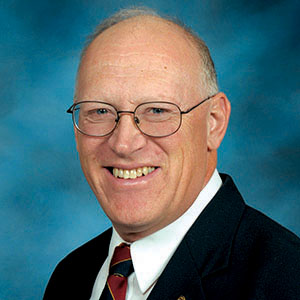Kansas Profile – Now That’s Rural: Connie Larson, barn quilts
At a glance: In 2012, a handful of northeast Kansas women developed a trail in the Flint Hills where visitors could view barn quilts. That trail has since been featured in a book, and the trail website has grown to 525 listings.
More information: Ron Wilson, rwilson@ksu.edu, 785-532-7690
Photos: Ron Wilson | Kansas Barn Quilts
Website: Huck Boyd National Institute for Rural Development
Jan. 10, 2024

By Ron Wilson, director of the Huck Boyd National Institute for Rural Development at Kansas State University
“Connect the dots.”
That was a fun game when I was a kid. Today, we’ll learn about an initiative that is connecting farms, communities and visitors across the Flint Hills – not with dots, but with the art of barn quilts.
![]() Connie Larson is one of the founders of the Flint Hills Quilt Trail, which originated in 2013. Larson joined with Abby Amick of Wabaunsee County, Sue Hageman of Riley County, and Marcia Rozell, now tourism director in Manhattan, in launching the barn quilt trail in the Flint Hills.
Connie Larson is one of the founders of the Flint Hills Quilt Trail, which originated in 2013. Larson joined with Abby Amick of Wabaunsee County, Sue Hageman of Riley County, and Marcia Rozell, now tourism director in Manhattan, in launching the barn quilt trail in the Flint Hills.
Larson and her family operate Ag Heritage Park, the farm equipment museum in the rural community of Alta Vista – population 409 people. Now, that’s rural.
They put up barn quilts at Ag Heritage Park. That inspired the idea of doing these regionally.
What are barn quilts?
“They are quilt patterns that are painted onto a board and put on the outside of a structure, such as a barn or shed,” Larson said. Most are painted on highly weather-resistant MDO board (a specialty plywood). These eye-catching, colorful works of art can decorate a farmstead and even attract visitors.
The barn quilt idea originated in Ohio where a woman posted a quilt design outside on her barn, in honor of her mother who was a quilter. Another nearby barn owner did the same. Eventually a series of these was created. Each design was different. They attracted visitors who wanted to go from one to another.
This became known as a barn quilt trail. The phenomenon moved west across the nation.
In 2012, Larson, Amick, Hageman and Rozell started exploring the idea of creating a barn quilt trail throughout the Kansas Flint Hills. The Flint Hills Tourism Coalition created a committee and the idea gained support.
The Flint Hills Quilt Trail had a busy start in 2013. The committee established a website, issued news releases, began recording quilt blocks on the website and organized a network of quilt trail representatives across the Flint Hills. By July 2013, the trail included 30 quilt blocks located in 13 Flint Hills counties.
Larson and others began offering barn quilt painting classes in the region. She said she enjoys painting them herself. The quilt trail continued to grow.
“This is artwork to promote rural areas,” Larson said. “It’s kind of a hobby. People like to drive around and see the different barn quilts, and it gets people into the small towns.”
By attracting visitors, it can spotlight farms and ranches and help the economy of rural communities.
Once a person finds or creates one barn quilt, he or she tends to be curious to see what the next one might look like. It becomes like a treasure hunt or a fun addiction.
“My brother told us it was like a disease,” Larson said with a smile. “It’s like quilting. You do one design and then you see another pattern and you just have to try it.”
Often the barn quilts are displayed by individual landowners. “Some businesses have started putting them up too,” Larson said.
A woman named Suzi Parron created the American Quilt Trail Program. She came to Kansas and wrote about the Flint Hills Barn Quilt Trail in a 2016 book.
As of 2023, those original 30 quilt blocks had grown into 525 website listings in every Flint Hills county plus neighboring counties north and south, from state line to state line.
“It’s still growing,” Larson said. Not only do the barn quilts create attractive visual art in a rural setting, they link communities across the region.
“It’s connecting the dots across the Flint Hills,” Larson said. “We still add barn quilts and update the website. We want to celebrate our success.”
For more information, see www.ksflinthillsquilttrail.com.
Connect the dots. That was a fun game as a kid, and it’s still fun to connect things. We commend Connie Larson, Abby Amick, Sue Hageman and Marcia Rozell for making a difference by creating a barn quilt trail and thinking regionally.
In the Flint Hills region, they are creating visual art and making connections.
Audio and text files of Kansas Profiles are available at http://www.kansasprofile.com. For more information about the Huck Boyd Institute, interested persons can visit http://www.huckboydinstitute.org.
***
